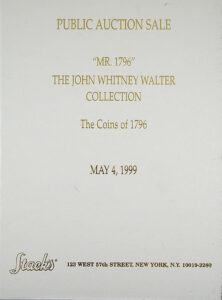Walter, John Whitney (1934-2018)
by Hadrien Rambach
John Whitney Walter was a New York businessman, the founder of several companies in the fields of electronics: security equipment, telecommunications, and consulting. Educated in Connecticut, Mr. Walter graduated in 1955 from Norwich University in Vermont and in 1960 from Columbia University with an MBA. In between undergrad and graduate school, he had served for 2 years in the army as a second lieutenant and was stationed during non-war time in Heidelberg, Germany. An inventor and holder of patents, John worked for Teleprompter in the 1970’s and then began his own company, National Security Systems, which produced and installed alarm systems using the liquid foil window striping patented by him along with the security panel and system from his design. Throughout the years, while still running National Security Systems, and using his knowledge of systems, John worked with the Trump Organization on a variety of hotels and apartment buildings in New York City, Las Vegas and Atlantic City. A first-cousin of US President Donald Trump, he was the Chief Project Officer responsible for the plans and construction of the Trump Village (a 3,700 unit complex in Brooklyn). He was very involved in the Congregational Church of Manhasset – where he had met his wife in the early 1960s, and they spent much time singing in the choir and chairing the boards of Trustees and Deacons several times, whilst he also helped keep the church running with his systems, electronics, and construction knowledge.
From 2000 to 2005, Mr. Walter was First Vice-President of the American Numismatic Society. He had won four “Personal Choice Exhibit” awards at American Numismatic Association Conventions, and at the last Philadelphia ANA World’s Fair of Money Convention he displayed his extensive collection Numismatic Coinage Errors. He had been pushed towards numismatics at a very young age, with the gift of a 1892 Columbian half dollar and a visit with his father to an exhibit of U.S. currency at the Chase National Bank, both in the 1930s. He started to look through change in the 1940s and then bought many coins from Jack Friedberg at Gimbel’s department store. He went on to form an exceptional series of American coins (which brought him the nickname “Mr. 1796”) which was auctioned by Stack’s in May 1999. And his U.S. banknotes were auctioned by Lyn Knight in October 2004.
Mr. Walter also formed a collection of Roman coins: his superb series of 79 aurei “The Men of Rome”, begun in 1984, was only completed when he obtained the splendid Clodius Albinus in June 1990, which later entered the George La Borde collection (NAC 91, lot 33), and the group was auctioned shortly afterwards by Stack’s and Harlan J. Berk. Some of these (unsolds?) reappeared at the StacksBowers auction of 14 August 2018 in Philadelphia (e.g. the Titus aureus no. 36 in 1990 = no. 20114 in 2018), as well as Greek coins (such as an Athenian gold diobol) and a few minor modern pieces.
Bibliography:
- Hadrien Rambach, “Provenance glossary”, in Numismatica Ars Classica, Auction 91: the George W. La Borde collection of Roman aurei – part I, Zurich, 23 May 2016, pp. [67]-[79]
- Hadrien Rambach, “Provenance glossary”, in Numismatica Ars Classica, Auction 99: the George W. La Borde collection of Roman aurei – part II, Zurich, 29 May 2017, pp. 47-63.
- Hadrien Rambach, “Provenance glossary”, in Numismatica Ars Classica, Auction 105: the George W. La Borde collection of Roman aurei – part III, Zurich, 9 May 2018, pp. 82-105.
This article was first published in a catalogue of auction house Numismatica Ars Classica.









